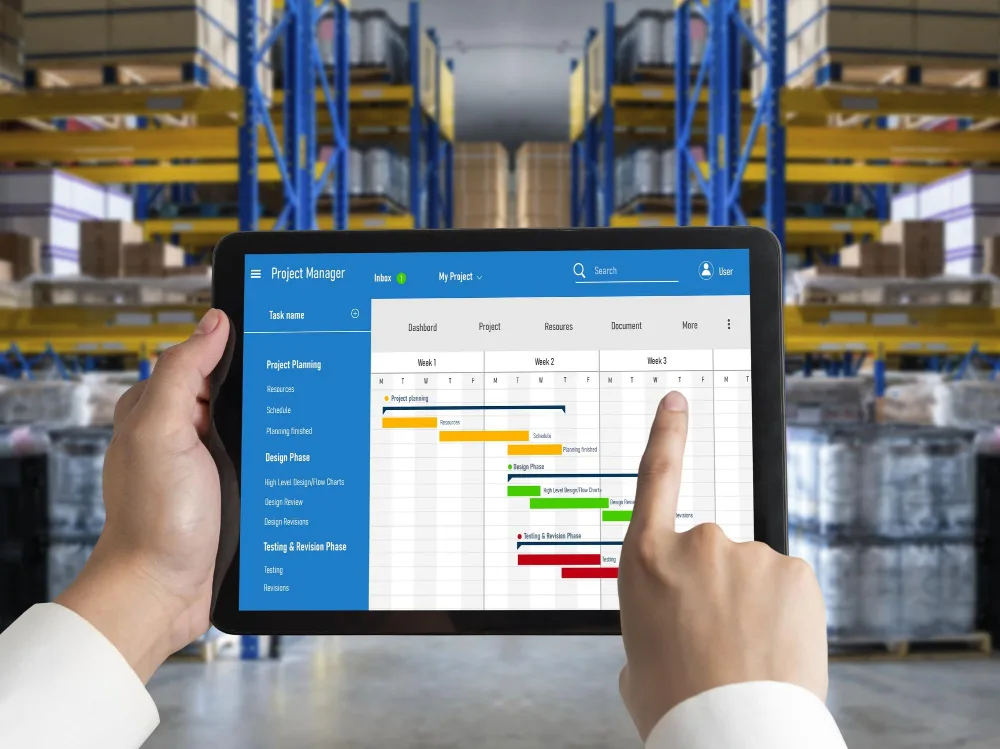Supply chain and logistics generate a vast amount of data continuously. To extract valuable information from this complex and siloed data, organizations need to implement rigorous data cleaning and validation processes. Plus, data-driven decisions are the key ingredient today for achieving success and facilitating greater control over the business direction.
To unlock the full potential of your data, it’s crucial to store it efficiently, which is where scalable data lakes come into play. Utilizing a pay-as-you-go model, data lakes allow companies to store vast quantities of raw data without limitations, enabling deep analysis and strategic planning.
Here’s how scalable data lakes benefit supply chain and logistics companies.
What is a Data Lake?
A data lake is a centralized repository that stores vast amounts of structured, unstructured, and raw data in its original format. It can seamlessly integrate data from various sources, including ERP systems, IoT sensors, CRM systems, and social media platforms. Unlike data warehouses, which store highly structured data optimized for specific reporting, data lakes offer greater flexibility for granular data analysis and advanced analytics.
Benefits of a Scalable Data Lake for Supply Chain & Logistics
- Improved Visibility and Real-Time Tracking
Imagine accessing up-to-the-minute data on inventory levels, fleet status, and shipments across all warehouses and transportation networks from a single source. A scalable data lake stores all relevant data, facilitating real-time tracking for better fleet and warehouse management. This enhanced visibility helps you track every truck, shipment, and product while quickly identifying bottlenecks in the process.
- Enhanced Planning and Forecasting Techniques
Scalable data lakes enable organizations to implement sophisticated forecasting techniques by integrating data from multiple sources, such as weather patterns, social media trends, and competitor activities. These insights allow for accurate predictions and proactive planning. For instance, you can adjust inventory levels based on demand forecasts or modify delivery routes according to real-time conditions.
- Precision with Granular Data Analysis
With data lakes, you can drill down to the smallest details, capturing information about product types, delivery locations, and external factors like weather conditions. This level of precision facilitates more accurate resource allocation and risk mitigation. For example, analyzing traffic patterns allows you to adjust delivery routes, reducing delays and improving on-time delivery rates.
- Integrate Data for Holistic Insights
Data in supply chain and logistics is often stored in disparate systems, leading to silos that hinder collaboration. A scalable data lake serves as a central repository, integrating data from various sources and eliminating silos. This holistic view fosters better decision-making and enhances data integration across departments.
- Proactive Problem Solving and Risk Mitigation
Data lakes empower organizations to discover hidden patterns and trends through historical data analysis. This capability enables proactive problem solving by identifying potential risks before they escalate. For example, by analyzing data from refrigerated trucks, you can detect potential equipment failures and initiate preventive maintenance, ensuring the timely delivery of perishable goods.
- Unleash the Power of AI and Machine Learning
Scalable data lakes provide the foundation for deploying AI and machine learning tools that enhance supply chain and logistics operations. These technologies can quickly analyze sensor data from vehicles, reducing maintenance costs and downtime. They can also identify suspicious activities, such as fraudulent invoicing or shipment rerouting, and optimize pricing strategies by analyzing real-time market data and customer behavior.
Building and Implementing a Scalable Data Lake for Supply Chain & Logistics
To build and implement a scalable data lake effectively, focus on three core aspects: data sources, data integration, and choosing the right technologies for implementation.
1. Data Sources
Identify and integrate all relevant data sources, including:
- ERP Systems: Housing inventory levels, purchase orders, sales data, and more.
- IoT Sensors: Collecting real-time data from trucks, warehouses, and production lines.
- Customer Data: Leveraging CRM data, social media insights, and website analytics for a comprehensive view of customer behavior.
External Data Sources: Incorporating traffic, weather, and congestion data to enhance planning and forecasting.
2. Data Integration
Effective data integration is key to a successful data lake implementation. Consider the following:
- Understand Data Formats: Ensure that data from various sources, whether structured or unstructured, is stored in a compatible format using data ingestion pipelines.

Data Standardization: Implement data governance policies to maintain data consistency and integrity across the organization.
Data Quality Management: Apply rigorous data quality management practices to cleanse and validate data, ensuring that only accurate and reliable information is stored.
3. Choose the Right Technology
Selecting the right technology is crucial for building a scalable data lake. You can opt for cloud solutions or an on-premise setup, depending on your organization’s needs. Consider whether a data lake house or a federated data lake architecture best suits your requirements. Additionally, invest in automation-enabled data management tools for efficient data ingestion, transformation, and quality control.
To Sum it Up
Building a scalable data lake is an ongoing process that requires continuous evaluation and adaptation to changing data sources, analytical methods, and business needs. This continuous improvement is essential for maintaining the effectiveness of your data lake and ensuring that your organization remains agile and competitive.
INTECH can assist in designing and maintaining a robust data management strategy, aligning your data lake and warehouse architecture with your specific requirements. A well-structured data lake can significantly enhance your supply chain and logistics operations, making them more resilient, scalable, and reliable.







